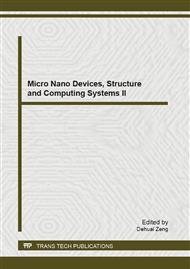p.125
p.130
p.136
p.145
p.149
p.153
p.157
p.161
p.169
First-Principles Study on the Hydrogen Storage of Sandwich-Type Dimetallocenes
Abstract:
The paper mainly focuses on the ability of absorbing hydrogen molecule of the dimetallocene (C5H5)2TM2(TM=Ti/Zn/Cu/Ni) based on the first-principles calculation. The result indicates that these compounds can adsorb up to eight hydrogen molecules, the binding energy is 0.596eV/H2 for Cp2Ti2, 0.802eV/H2 for Cp2Zn2, 0.422eV/H2 for Cp2Cu2 and 0.182eV/H2 for Cp2Ni2 respectively. The corresponding gravimetric hydrogen-storage capacity is 7.1wt% for Cp2Ti2, 6.2wt% for Cp2Zn2, 6.3wt% for Cp2Cu2 and 6.5wt% for Cp2Ni2 respectively. These sandwich-type organometallocenes proposed in this work are favorable for reversible adsorption and desorption of hydrogen under ambient conditions. These predictions will likely provide a new route for developing novel high-capacity hydrogen-storage materials.
Info:
Periodical:
Pages:
149-152
Citation:
Online since:
March 2013
Authors:
Price:
Сopyright:
© 2013 Trans Tech Publications Ltd. All Rights Reserved
Share:
Citation:


